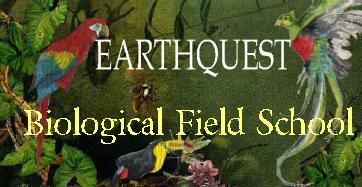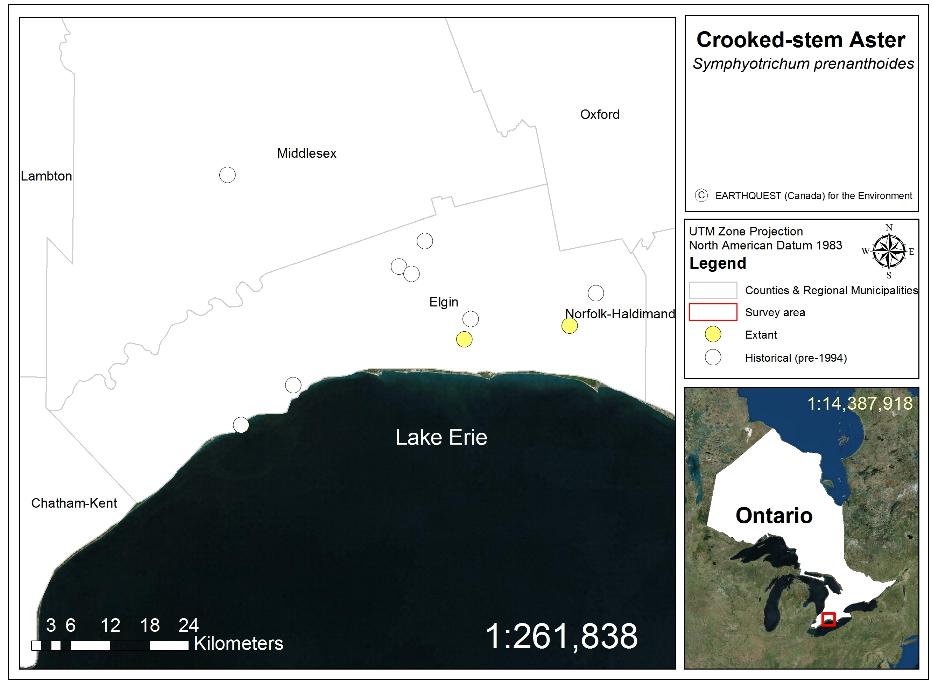
Spring | ||||||||||||||||||
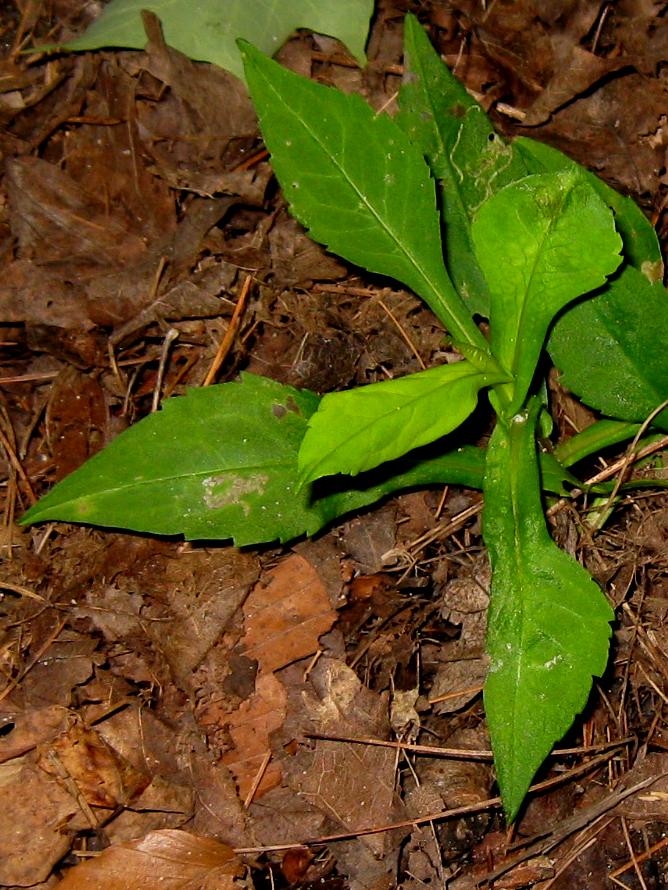 |
Emergence period: May 1 - 15 | |||||||||||||||||
Summer | ||||||||||||||||||
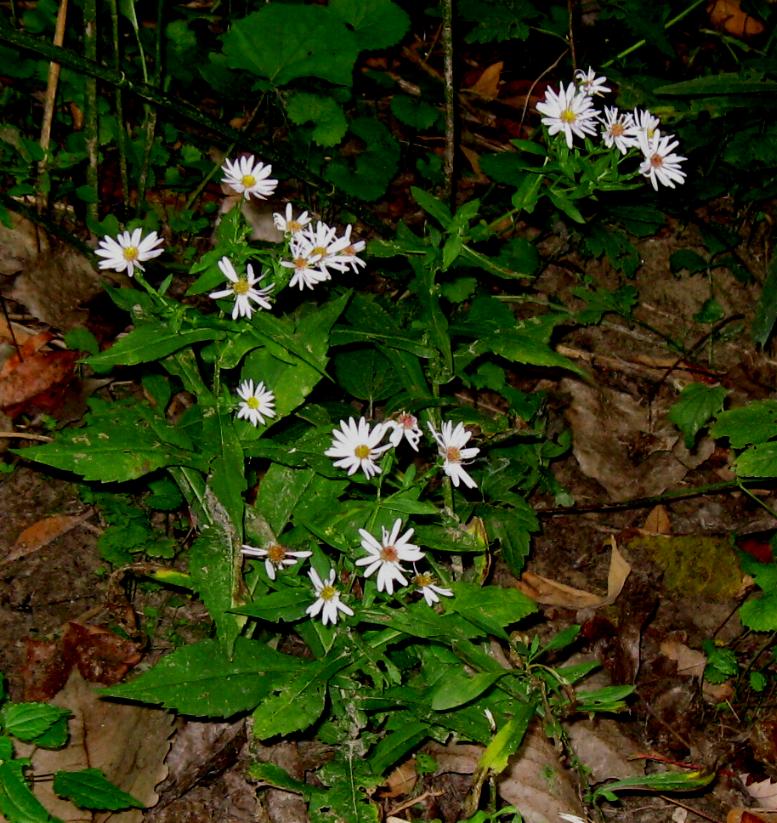 |
Bottom leaf
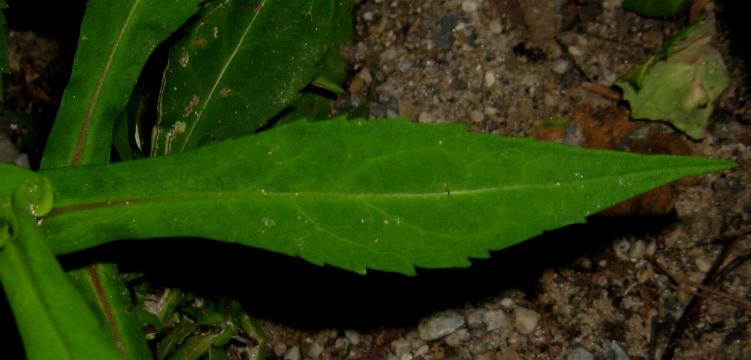 Middle leaf
| 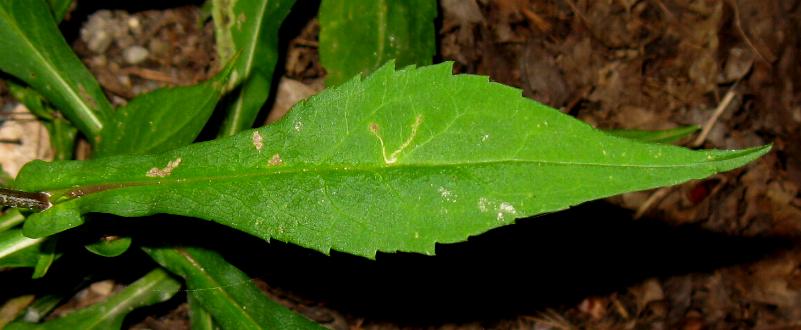 Photo: Dave Jolly Upper leaf
| 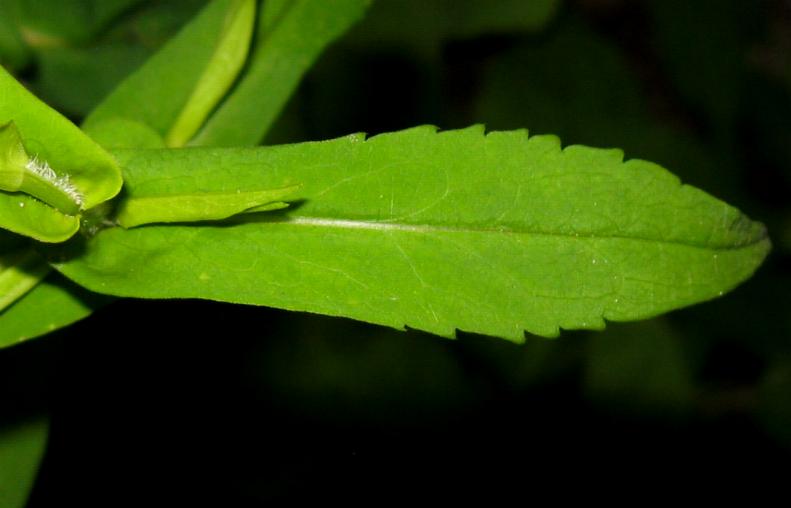 Photo: Dave Jolly Flower
|
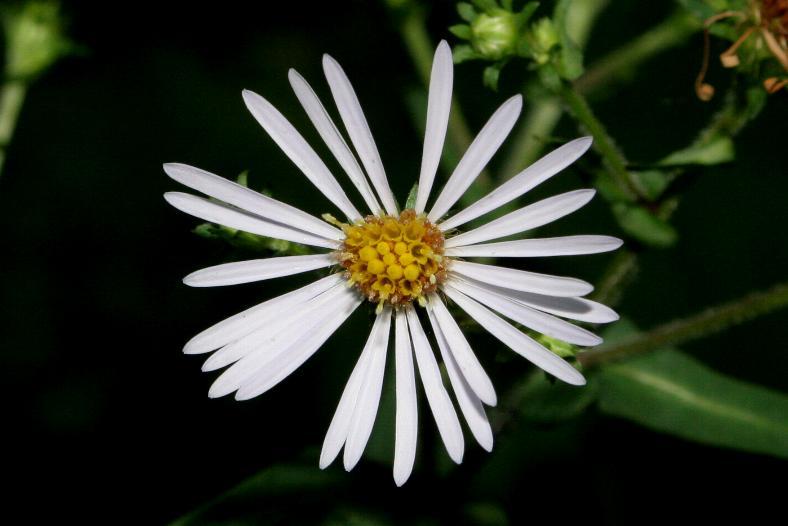 Photo: Dave Jolly Fall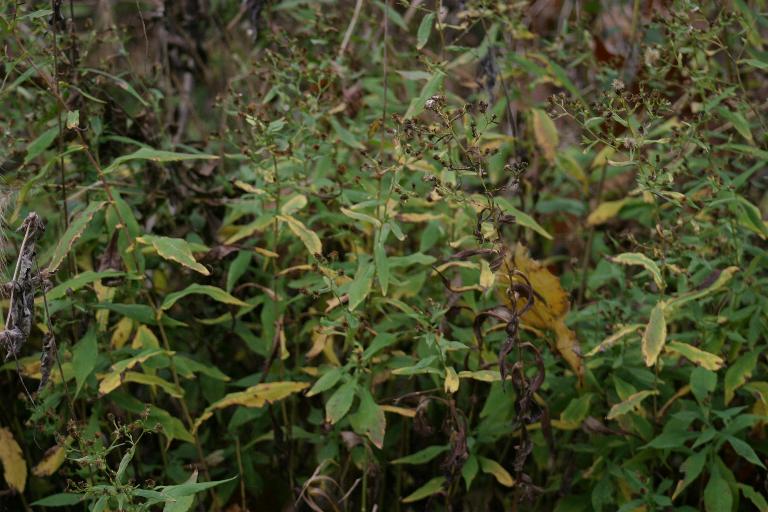 Winter
Flowering period: Most plants emerge from rhizomes in the first week of May, flowering from August 5th to November 5th (EARTHQUEST 2015b, Jolly 2015a).
5 Second Rule Identification: A perennial wildflower that grows up to 90 cm tall with pale blue flowers and distinctive zig-zag stems (COSEWIC 2012). Another diagnostic feature are the obovate leaves that appear to taper at both ends, widest in the middle and clasping the main stem. The species grows in colonies, with multiple stems arising from creeping rhizomes (horizontal underground stems).
Biology and Ecology: Please refer to COSEWIC (2012) for a detailed description of Crooked-stem Aster biology and ecology.
Insect Pollinators: The following have been observed; Bombus sp, Syphridae, Halictidae.
Population Size: According to the most recent COSEWIC (2012) assessment the total Canadian population size of Crooked-stem Aster is unknown and difficult to estimate because the species forms dense colonies, in which numbers of individual plants are difficult to determine. Approximately 11 sites with extant populations occur and have remained relatively unchanged since 2002. Eighty three Natural Heritage Information Centre Element Occurrences exist between 1952 and 2010.
Habitat & Soils: This riparian floodplain plant prefers moist, rich floodplain woodlands and edges along riverbanks, streams and creeks. Although general soil type is given in the COSEWIC status report, more detailed information is needed on Ecological Land Classification vegetation type parameters to ascertain ecosite preferences for Ontario populations. One population in Elgin county was found growing in Fresh-Moist Poplar Deciduous Forest Type (FODM8-1) (Jolly 2015).
Threats: The greatest threat is invasive species, recreational use, logging and live stock grazing. One population within a Conservation Authority campground is regularly mowed.
Recovery: Currently, a recovery team has been assembled, but no recovery strategy exists. Please refer to the following Weblink for the COSEWIC report; "COSEWIC Assessment and Status Report on the Crooked-stem Aster Symphyotrichum prenanthoides in Canada - 2012".
Biometrics: Individuals ranging in size from 25 - 90 cm in height. Stem diagnostically zig zags, particularly in upper portions. Leaves are distinctively obovate and clasping: bottom leaf; 1.1 - 2.6 cm wide by 7 - 11.6 cm long, middle leaf; 1.7 - 2.5 cm wide by 7.4 - 11.4 cm long, upper leaf; 0.7 - 1.8 cm wide by 3.8 - 8.3 cm long.
Environmental Protection: This species received some federal protection after being designated special concern in 1999 by COSEWIC under the federal Species at Risk Act. Status was reassessed as threatened in 2002 and re-designated to special concern in November, 2012. Provincially, Crooked-stem Aster received protection by the Ontario Ministry of Natural Resources and Forestry in 2008 under the provincial Endangered Species Act when it was listed as threatened. On June 27, 2014 it was down listed to special concern.
Confusing look-a-likes: This species resembles several species, but is most superficially similar to Purple stemmed Aster (Symphyotrichum puniceus).
References:
Distribution: To date, current, historical and extirpated populations have been found in 4 counties; Elgin, Middlesex, Norfolk and Oxford. The largest population is found primarily in Elgin county.
$35.00 CAD + shipping and handling ($15 CAD within Canada, $20 CAN to the USA) 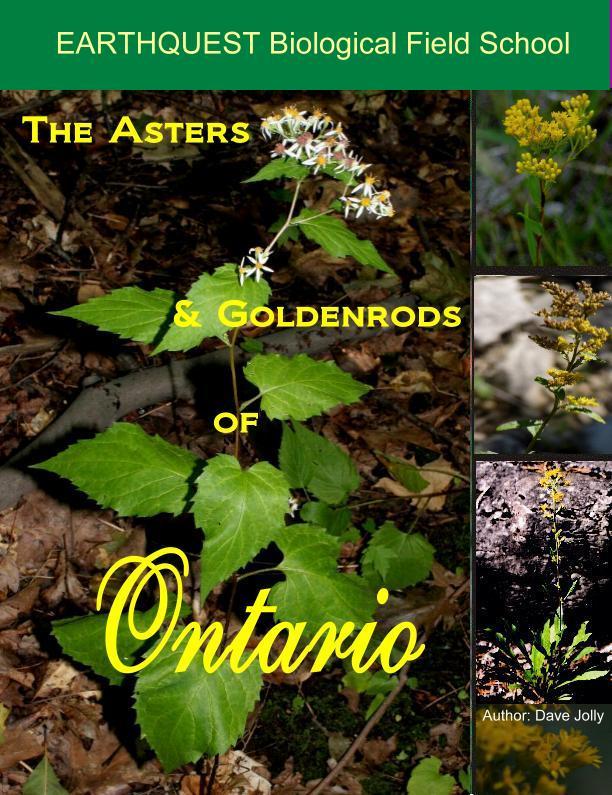
Photo: Dave Jolly for more information please click on;
Senior Instructor/Ecologist/Consultant & President D. Jolly, B.Sc.
| ||||||||||||||
 EARTHQUEST (Canada) for the Environment
EARTHQUEST (Canada) for the Environment
